





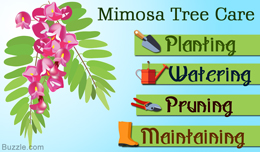 The Curative UsesThe mimosa tree husk is treated and used in various medicines for curing insomnia, coughing, sprains, and back pain. Its flowers are used for curing conjunctivitis.Mimosa tree is also known as powderpuff tree or silk tree, because it has silky feathery appearance with flowers in shades of pink. It is widely known by the names Persian silk tree and pink siris. A unique characteristic of the leaves of this tree is that the leaves close during nighttime, while during the rains, the leaflets bow downwards.Tree DescriptionMimosa tree (Albizia julibrissin) was introduced to the US in 1745, primarily as an ornamental tree. It is native to Middle East and Asia. It is a fast-growing, deciduous tree that grows best in USDA hardiness zones 6 through 9. It has the ability to grow and reproduce along roadways and disturbed areas. Mimosa flowering occurs from late April to July. The flowers are fragrant and in various shades of pink, about 1½ inches long. They easily attract moths, lovely butterflies, and those chirping birds (the hummingbird's favorite plant!). With proper care and maintenance, these trees last up to 15 years on an average. They can grow up to 20-30 feet tall.Steps to Plant and Cultivate a Mimosa TreeStep 1: You can simply buy a young mimosa tree or start with a seedpod which will be easily available from anyone who has a mimosa tree.
The Curative UsesThe mimosa tree husk is treated and used in various medicines for curing insomnia, coughing, sprains, and back pain. Its flowers are used for curing conjunctivitis.Mimosa tree is also known as powderpuff tree or silk tree, because it has silky feathery appearance with flowers in shades of pink. It is widely known by the names Persian silk tree and pink siris. A unique characteristic of the leaves of this tree is that the leaves close during nighttime, while during the rains, the leaflets bow downwards.Tree DescriptionMimosa tree (Albizia julibrissin) was introduced to the US in 1745, primarily as an ornamental tree. It is native to Middle East and Asia. It is a fast-growing, deciduous tree that grows best in USDA hardiness zones 6 through 9. It has the ability to grow and reproduce along roadways and disturbed areas. Mimosa flowering occurs from late April to July. The flowers are fragrant and in various shades of pink, about 1½ inches long. They easily attract moths, lovely butterflies, and those chirping birds (the hummingbird's favorite plant!). With proper care and maintenance, these trees last up to 15 years on an average. They can grow up to 20-30 feet tall.Steps to Plant and Cultivate a Mimosa TreeStep 1: You can simply buy a young mimosa tree or start with a seedpod which will be easily available from anyone who has a mimosa tree.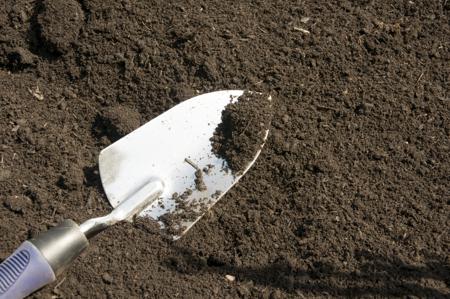 Moist and well-drained soil
Moist and well-drained soil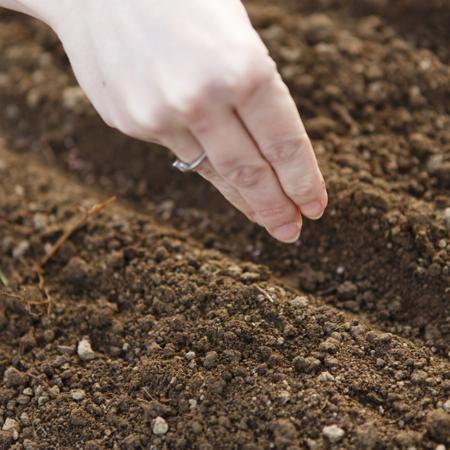 Shallow seedingTemperature and weather conditions: Mimosa is one of those trees which will thank you for putting it in the brightest, sunniest part of your yard. Temperatures should be around 65-75°F/18-24°C. Remember, mimosa won't blossom without sunlight. It can dwell in moderate to high humidity. The drought tolerance of this tree is quite high.Planting: Don't plant them in a congested place. Allowing 25-30 feet space around the tree would work. If you are interested in growing them in series, space them 20 feet apart.
Shallow seedingTemperature and weather conditions: Mimosa is one of those trees which will thank you for putting it in the brightest, sunniest part of your yard. Temperatures should be around 65-75°F/18-24°C. Remember, mimosa won't blossom without sunlight. It can dwell in moderate to high humidity. The drought tolerance of this tree is quite high.Planting: Don't plant them in a congested place. Allowing 25-30 feet space around the tree would work. If you are interested in growing them in series, space them 20 feet apart.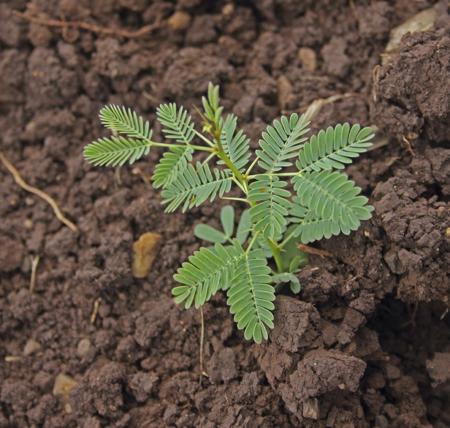 Plant in an open, uncrowded areaWatering: This tender tree won't do well with excess watering. It only needs to be watered during dry spells or if you live in a desert. So, ideally you should water it once in two weeks. Anything beyond this will surely result in tree destruction.Fertilizing: Fertilize the mimosa tree in the early spring. The fertilizer should be applied at the base of the tree, watering it for like 10 minutes. You should feed them every two weeks. Though the threat of vascular wilt still persists, you can keep your tree as healthy as possible with a balanced fertilizer, not a high-nitrogen fertilizer.Pruning: Pruning is a horticultural practice to remove unwanted parts of a plant. The best time to prune mimosa is during mid-spring (preferably only once a year), when the threat of frost is the lowest; though light pruning is safe any time of year. You need to inspect the tree especially at lower trunks. Use prune shears to cut just where the limb meets the tree trunk. Be careful not to cut the neck collar. Prune out dead branches and yellowing leaves. Shape the mimosa by cutting the overgrown limbs, or by removing damaged limbs. The thick canopy growth would be desirable, which can be obtained by cutting thin limbs approximately 3-5 inches from the end of the limb. Try to make the canopy look like an umbrella. You can use your ideas for shaping your mimosa tree. Don't forget to clean all the pruning tools after each use to prevent contamination to other plants or trees.
Plant in an open, uncrowded areaWatering: This tender tree won't do well with excess watering. It only needs to be watered during dry spells or if you live in a desert. So, ideally you should water it once in two weeks. Anything beyond this will surely result in tree destruction.Fertilizing: Fertilize the mimosa tree in the early spring. The fertilizer should be applied at the base of the tree, watering it for like 10 minutes. You should feed them every two weeks. Though the threat of vascular wilt still persists, you can keep your tree as healthy as possible with a balanced fertilizer, not a high-nitrogen fertilizer.Pruning: Pruning is a horticultural practice to remove unwanted parts of a plant. The best time to prune mimosa is during mid-spring (preferably only once a year), when the threat of frost is the lowest; though light pruning is safe any time of year. You need to inspect the tree especially at lower trunks. Use prune shears to cut just where the limb meets the tree trunk. Be careful not to cut the neck collar. Prune out dead branches and yellowing leaves. Shape the mimosa by cutting the overgrown limbs, or by removing damaged limbs. The thick canopy growth would be desirable, which can be obtained by cutting thin limbs approximately 3-5 inches from the end of the limb. Try to make the canopy look like an umbrella. You can use your ideas for shaping your mimosa tree. Don't forget to clean all the pruning tools after each use to prevent contamination to other plants or trees.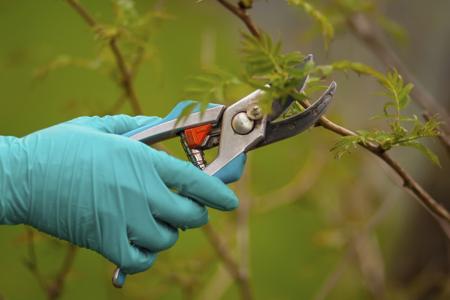 Prune the dead branches
Prune the dead branches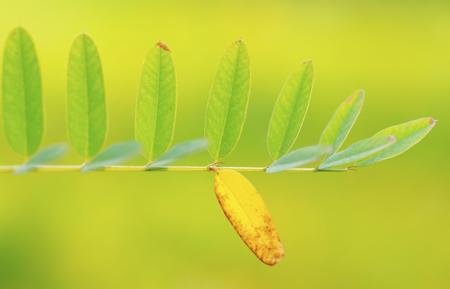 Prune out the yellow leavesPests: These trees are prone to webworms, cottony cushion scales, and mites. Cottony cushion scales leave large white egg sacs on the tree. Webworms can be recognized by the presence of distinct gray webs around leaves. Thus, you may require insecticides and pesticides if the tree is flooded with such worms, to control the pest population.Diseases: The tree attracts webworm as mentioned earlier, and ends up contracting vascular wilt, leading to its early demise. This canker is known as the Mimosa (vascular) wilt. Symptoms of this disease are yellowing of leaves or excessive shedding. Regularly cutting and removing dead branches may increase the lifespan of your tree, though not completely avoiding the risks of getting infected by this disease.Maintenance: After the flowers fade away, the tree grows hundreds brown seedpods, that resemble beans. These hang from every branch. Pick up all the seedpods from your yard. You may keep them and grow more mimosa trees if you wish. If you do not pick up the seedpods, the seeds will grow into new trees in your yard. Also, these unwanted seedpods can create tension between you and your neighbors. Without warm summers, the wood quickly becomes damaged and fails to flower, because the wood itself is weak and tends to break. And of course, the drooping weak branches don't seem very attractive. Prune in the spring by taking them out along with the previous year's growth back to a few buds.
Prune out the yellow leavesPests: These trees are prone to webworms, cottony cushion scales, and mites. Cottony cushion scales leave large white egg sacs on the tree. Webworms can be recognized by the presence of distinct gray webs around leaves. Thus, you may require insecticides and pesticides if the tree is flooded with such worms, to control the pest population.Diseases: The tree attracts webworm as mentioned earlier, and ends up contracting vascular wilt, leading to its early demise. This canker is known as the Mimosa (vascular) wilt. Symptoms of this disease are yellowing of leaves or excessive shedding. Regularly cutting and removing dead branches may increase the lifespan of your tree, though not completely avoiding the risks of getting infected by this disease.Maintenance: After the flowers fade away, the tree grows hundreds brown seedpods, that resemble beans. These hang from every branch. Pick up all the seedpods from your yard. You may keep them and grow more mimosa trees if you wish. If you do not pick up the seedpods, the seeds will grow into new trees in your yard. Also, these unwanted seedpods can create tension between you and your neighbors. Without warm summers, the wood quickly becomes damaged and fails to flower, because the wood itself is weak and tends to break. And of course, the drooping weak branches don't seem very attractive. Prune in the spring by taking them out along with the previous year's growth back to a few buds.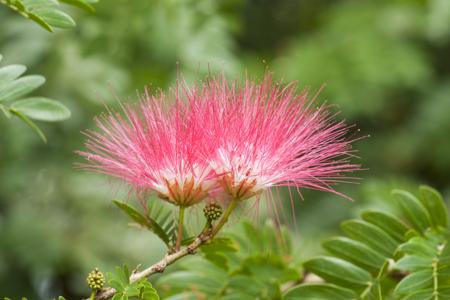 Isn't a sight-pleasing mimosa worth all the effort?All in all, planting mimosa tree can be a great experience, adding beauty to your garden or giving a scenic-look to your terrace. Decide upon it. The sensational fragrance and pleasing look pays off big time for all the efforts incorporated for growing and nurturing this tree. Of course, you can combine its colors with various other trees, shrubs, or flowers to enhance its beauty.
Isn't a sight-pleasing mimosa worth all the effort?All in all, planting mimosa tree can be a great experience, adding beauty to your garden or giving a scenic-look to your terrace. Decide upon it. The sensational fragrance and pleasing look pays off big time for all the efforts incorporated for growing and nurturing this tree. Of course, you can combine its colors with various other trees, shrubs, or flowers to enhance its beauty.
Copyright © www.100flowers.win Botanic Garden All Rights Reserved